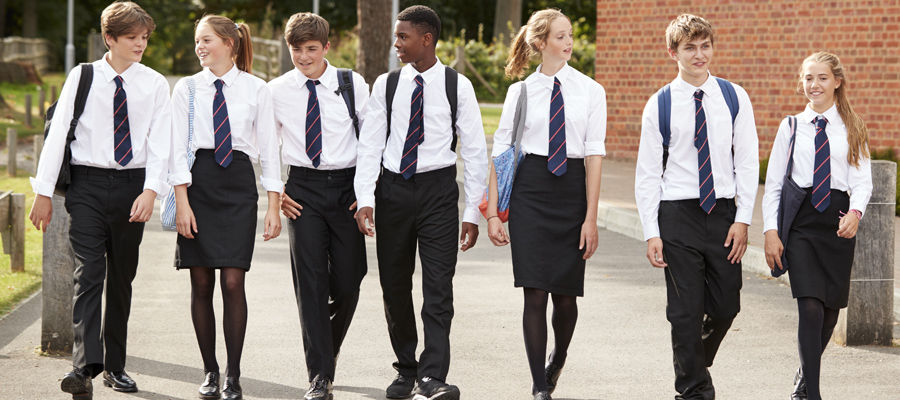Elite private schools rake in public funds while special needs students go without

Every year the BC government provides hundreds of millions of dollars in public funding to private schools, including elite prep schools. Given that BC’s public education system has been severely underfunded for most of the past two decades—and is still failing to adequately support students with special needs—this use of public resources is hard to fathom. BC should eliminate the flow of taxpayer dollars to elite private schools, and redirect the funding to support special needs students.
Overall, a projected $426 million in public tax dollars will be sent to private schools this school year through provincial per student grant funding. As measured by their share of these public dollars, the biggest group of private schools is religious schools, followed by prep schools and schools with specific teaching approaches like Montessori. There is also a smattering of special needs-focused private schools, as well as independent First Nations schools that receive public funding.
For present purposes, I’ll focus just on the subset of elite private schools—those that charge substantial tuition fees based largely on prestige and exclusivity—and the public funding the flows to them. Ending the taxpayer funding of these high-tuition, elite private schools should be an easy choice. If the provincial government were to do this, it could immediately redirect substantial funding to supports for special needs students in our public education system.
There are two tiers of public funding for private schools in BC. “Group 1” private schools receive public funding at a rate of 50% of the operating grant provided to public schools in the same district. To get funding at this rate, schools are not allowed to spend more per student than public schools. This effectively puts a limit on the tuition fees they can charge (though typically tuition fees are still many thousands of dollars per year).
“Group 2” private schools are a different story. They can spend and charge as much tuition as they like—and they do—and still receive public funding. Funding to these schools comes at a somewhat lower rate of 35% of the per-student grant to public schools. There are dozens of such schools in the province. For example, the posh St. George’s School for boys in Vancouver charges tuition fees of $24,950 per year for high school students, and receives well over $3 million in public funding.
Indeed, there is a laundry list of elite schools that charge sky-high tuition fees and still rake in public funding of at least $1 million each year. A sampling includes Crofton House School ($22,000), Shawnigan Lake School ($27,200), West Point Grey Academy ($22,470), Stratford Hall ($23,050), Glenlyon Norfolk School ($22,045), York House School ($22,400), and St. Michaels University School ($22,980)—and the list could go on. These are “day school” tuition fees for BC residents; for boarding students, tuition can reach over $50,000 per year.
A projected $426 million in public tax dollars will be sent to private schools in BC this school year, and private schools benefit from a whole host of tax breaks.
If the public subsidy to elite private schools were eliminated, how many taxpayer dollars could be freed up? To arrive at a conservative estimate, we can look at the total funding to all Group 2 schools, but subtract a number of potentially more complicated cases (specifically, I will assume that public funding would be maintained for First Nations schools and the special needs school that falls into Group 2).
According to Ministry of Education figures, the remaining Group 2 schools (largely classified as prep schools) received just over 10% of total private school funding in the 2016/17 school year. This represents about $38 million in taxpayer dollars flowing to elite private schools. Assuming these schools continue to receive approximately the same share of total public funding to private schools, they will rake in about $43 million in provincial dollars in 2018/19.
How big a difference could this funding make to special needs students? The provincial government earmarked an estimated $509 million for special needs funding in public schools this year. Adding $43 million to this total would represent a substantial boost of more than 8%.
Increased support for special needs students is essential. BC saw the number of special education teachers decline almost 25% between 2000 and 2016, and the ratio of special needs students to special education teachers has also increased, according to data compiled by the BC Teachers’ Federation. Just two weeks into the current school year, parents of kids with disabilities had already reported nearly 100 incidents of these students being asked to stay home, sent home early, or separated from their class, among other types of exclusion. During the acute teacher shortage faced during the past school year, special needs students also saw their special needs teachers pulled away to work as classroom substitutes. Parents of kids with special needs have made it clear that they are being left behind.
More broadly, BC needs to fix its flawed education funding formula, which often fails to ensure that funding earmarked for special needs students is actually reaching them (and currently does not provide additional funding for students with learning disabilities). Without a clear requirement that earmarked funding actually goes to supports for students with special needs, it may be used instead to patch over general underfunding problems that BC schools have faced for many years.
BC saw the number of special education teachers decline almost 25% between 2000 and 2016, and the ratio of special needs students to special education teachers has also increased.
Strikingly, public funding of elite private schools goes well beyond what I’ve discussed so far. In addition to provincial grant funding, private schools benefit from a whole host of tax breaks. For example, part of private school tuition can be claimed as a federal child care tax credit, based on the rather creative idea that recess and lunch in private schools represent a child care service.
Private schools also receive a lucrative exemption from property taxes, which their lobby group estimates saves them millions of dollars each year in BC. For example, according to BC property assessment data, the property at St. George’s publicly listed address (on Vancouver’s wealthy west side) was worth over $130 million in 2017. Without the exemption, a property of that value would have owed over $500,000 in property taxes if the non-profit rate that year were applied.
Elite private schools also take in millions of dollars in large donations annually, which are eligible for the charitable donations tax credit. St. George’s alone reports that it issued $13 million in donation tax receipts in 2016/17. Moreover, tuition fees can also be claimed as a charitable donation and deducted from taxes in the case of many private religious schools (in both Group 1 and Group 2).
There’s a good case for ending nearly all public funding of private schools (and an open and shut case when it comes to elite private schools). Half of Canada’s provinces don’t provide any operating grant funding to private schools, so taking this step would hardly be unprecedented. Public funding for private schools is also very unpopular, with polling showing 63% of British Columbians opposed to funding secular private schools (and even more opposed to funding religious private schools). Opposition to funding elite private schools in particular would likely be even higher still.
Critics of defunding private schools point out that ending the subsidies might lead to students re-entering the public system, which would require increased funding for the public system that would offset any savings. This point is overstated; there are plenty of private schools in provinces that don’t provide them with public funds. In any case, even absent cost savings, returning kids to the great equalizer that is our public education system is good in and of itself.
While there may be some complexities in defunding all BC private schools, the case against publicly funding elite private schools is more straightforward. Those willing to pay $20,000 per year in private prep school tuition are unlikely to give up on this lifestyle just because public subsidies are withdrawn. Moreover, because public subsidies represent a much smaller share of Group 2 school income, the schools could either be expected to absorb the loss or raise their tuitions without losing very many students to the public system. As a result, defunding elite private schools would likely represent almost pure savings to the provincial government.
Those savings—tens of millions of dollars—should be invested immediately to support kids with special needs in our public schools, whom we have let down for far too long.
Topics: Education, Provincial budget & finance


